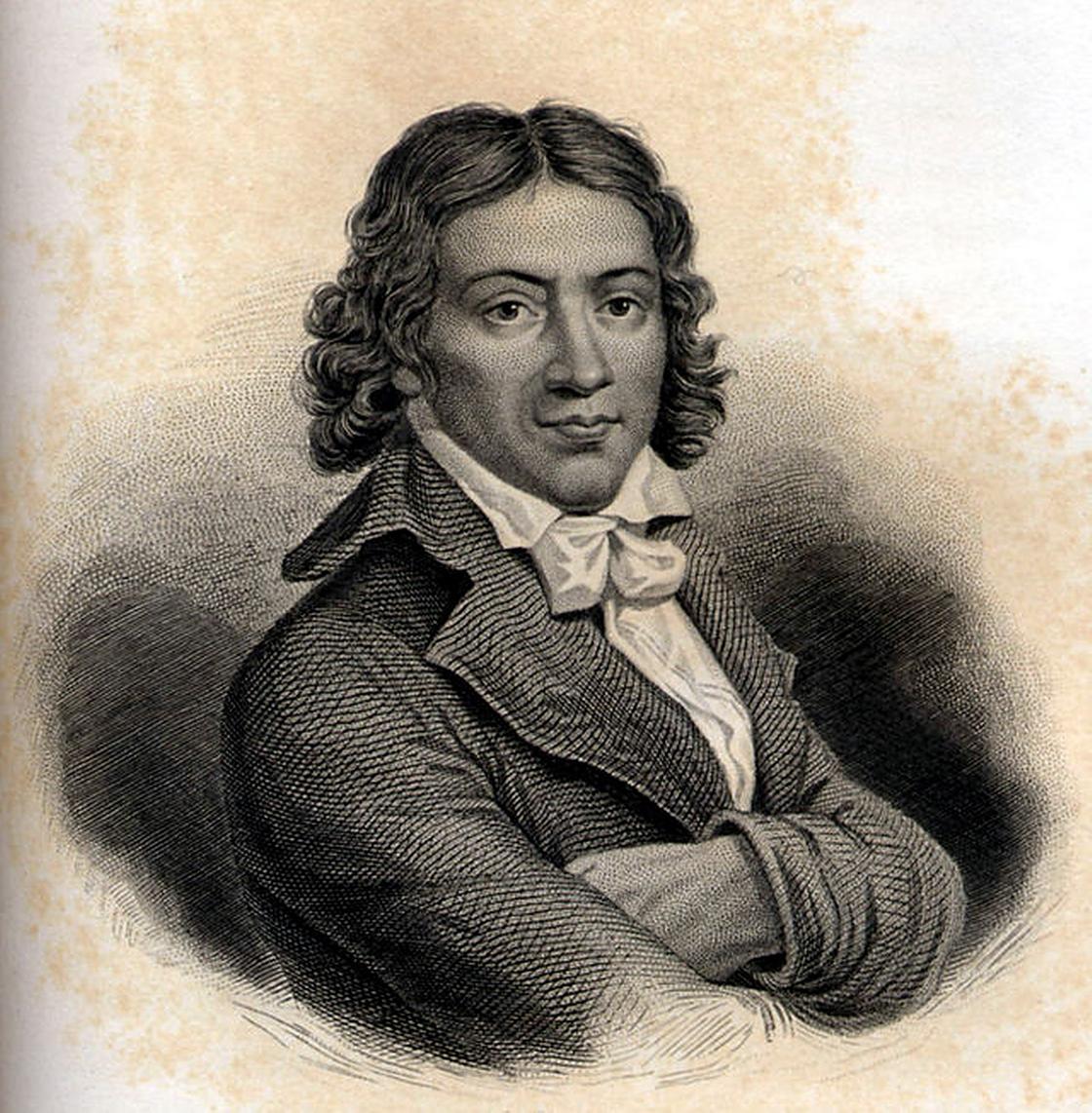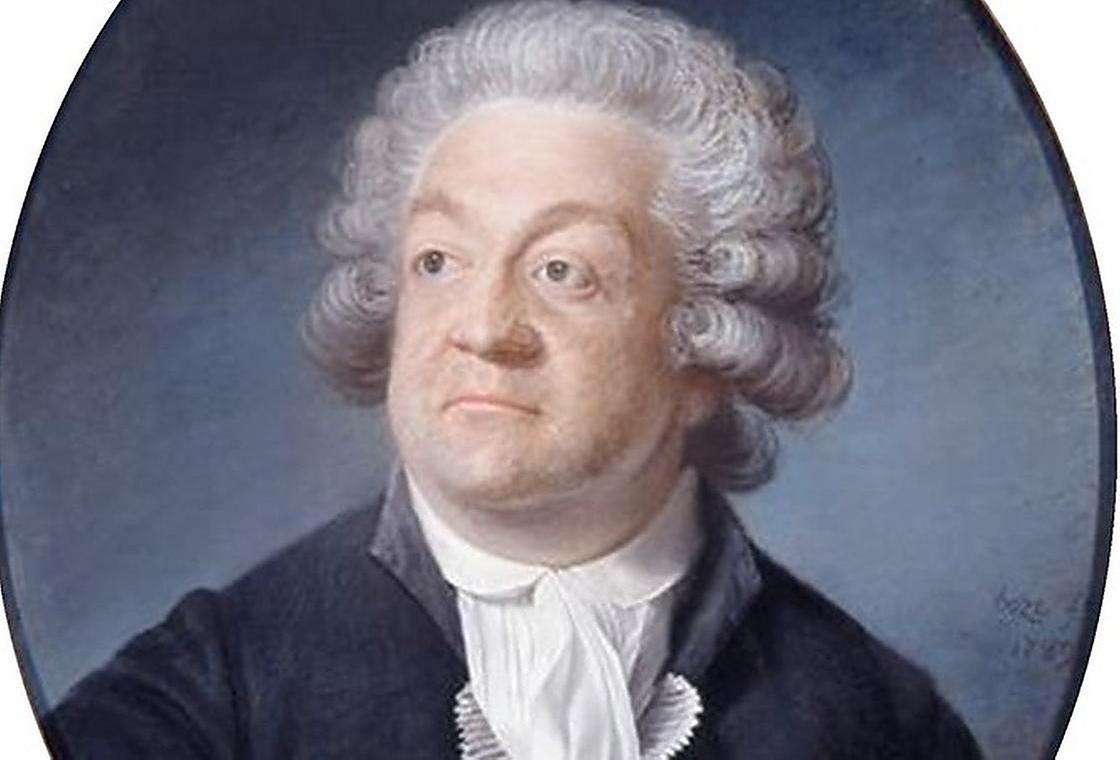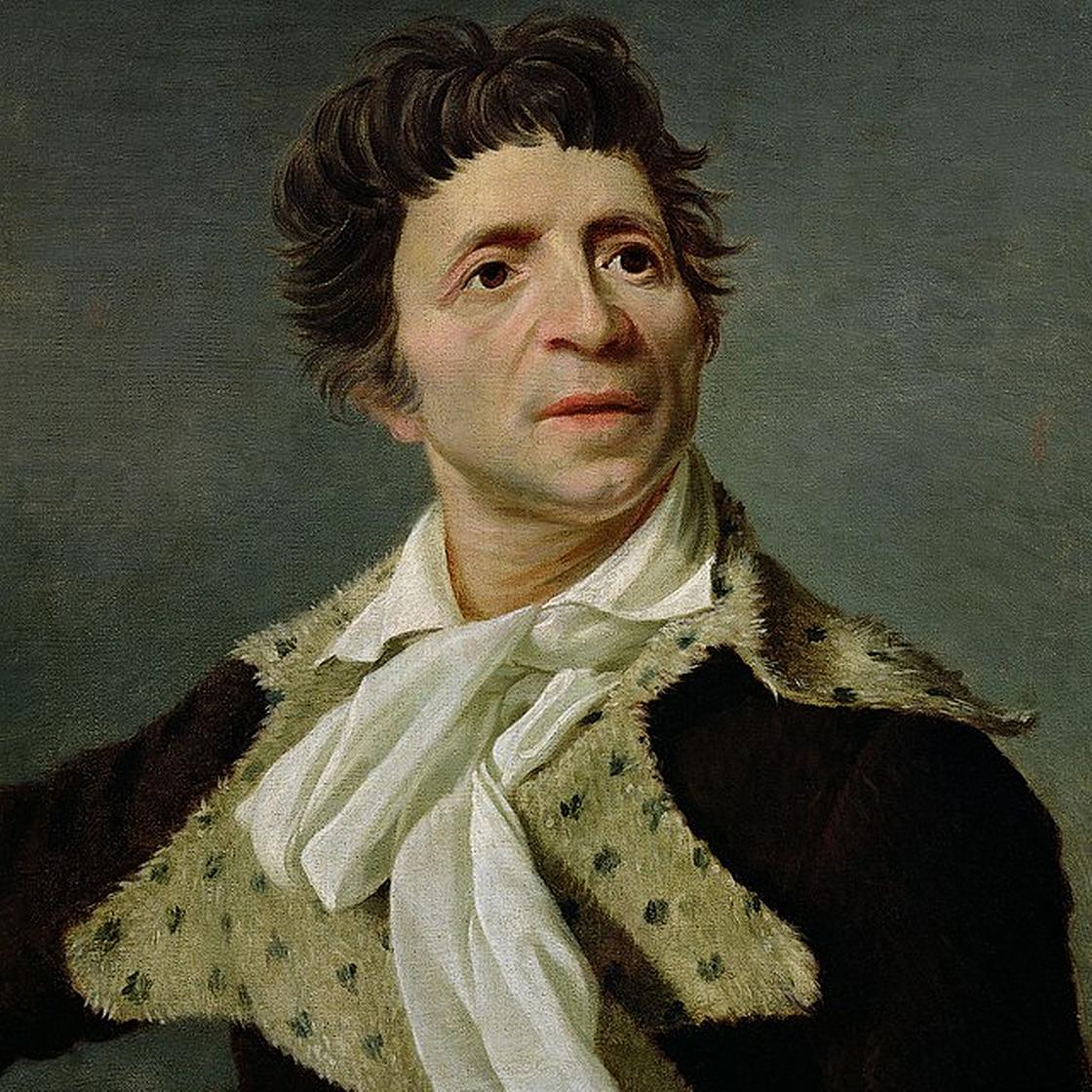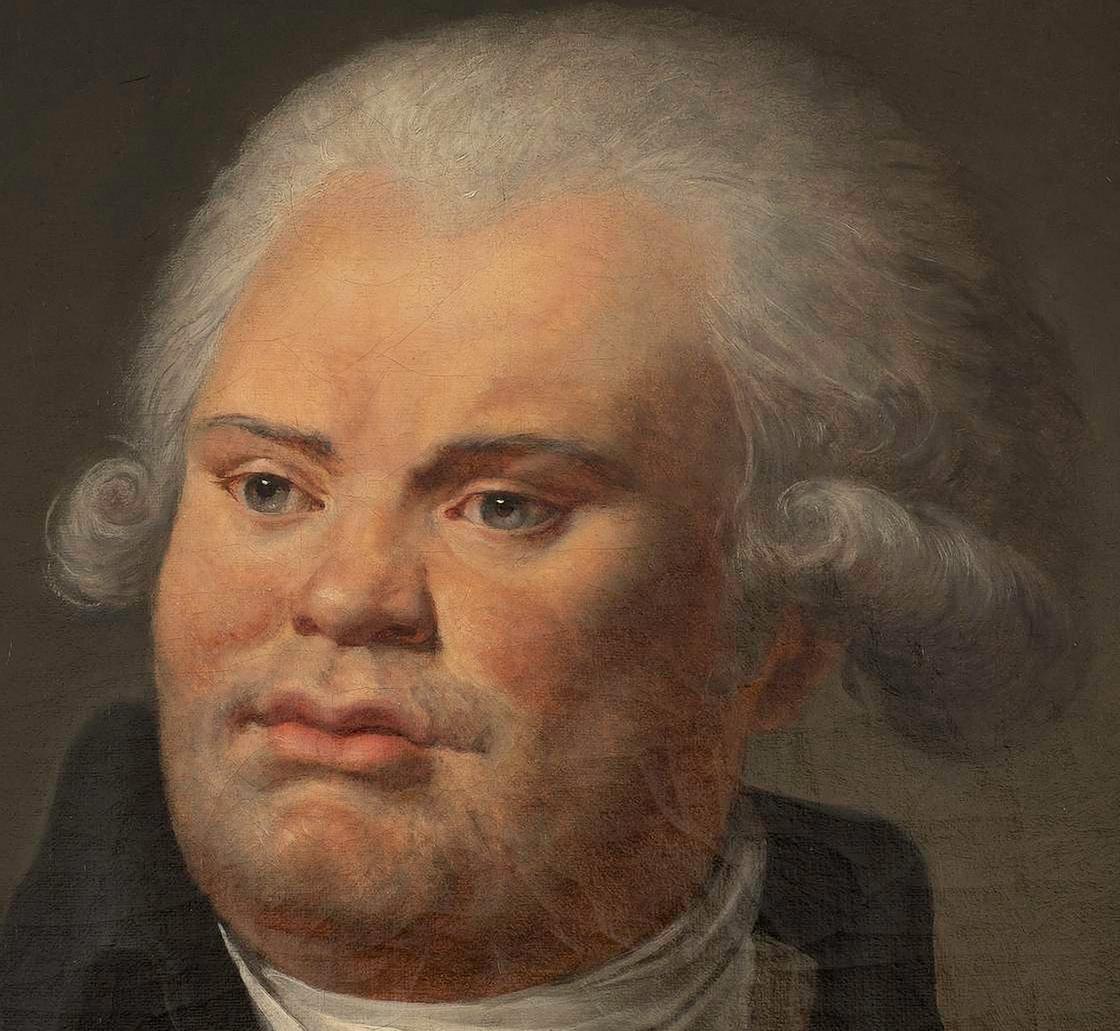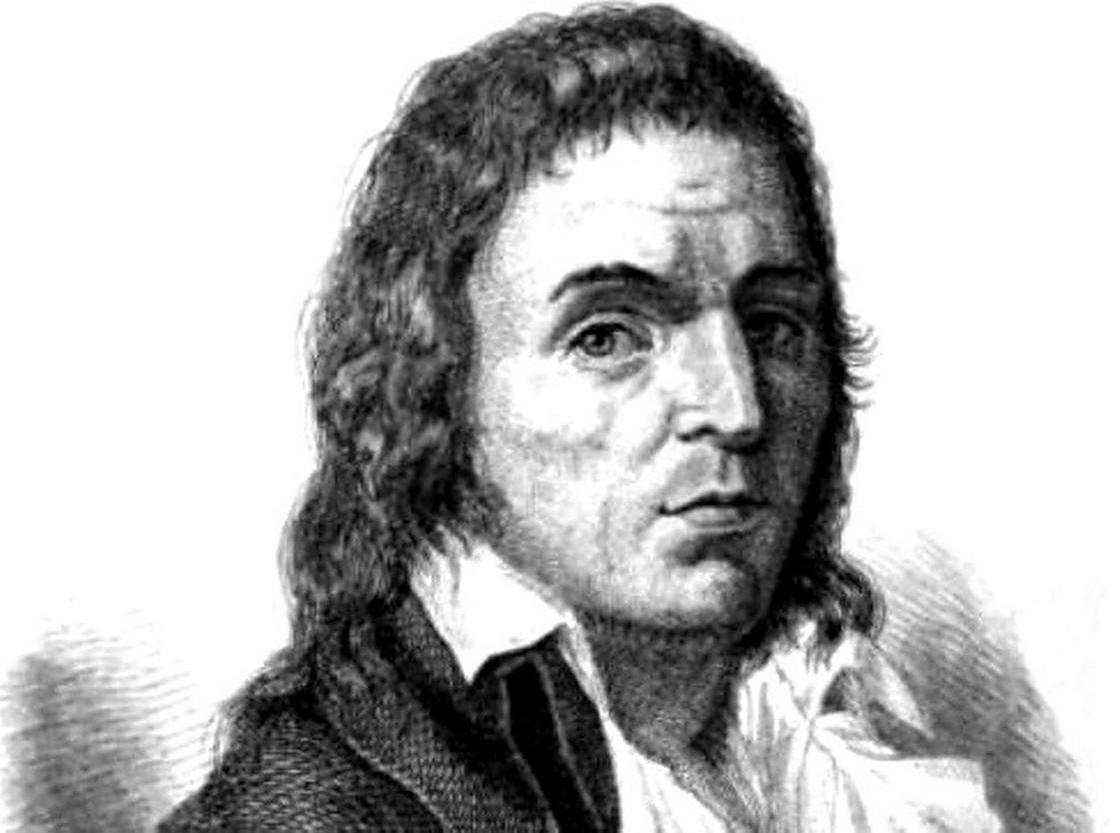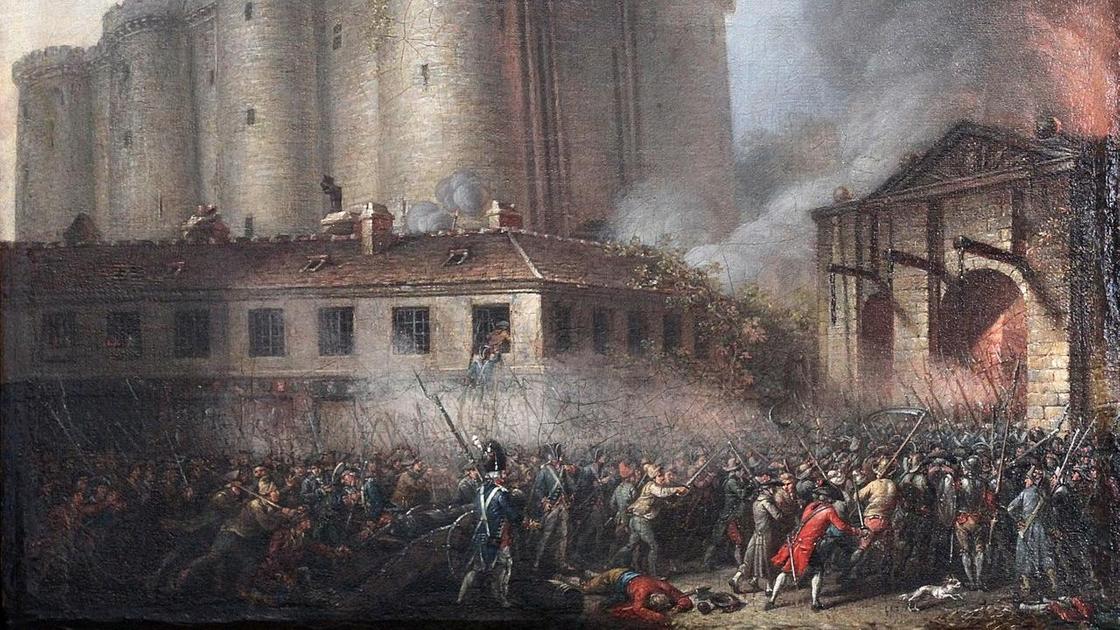
Великая Французская революция — знаковое событие как для самой Франции, так и всего мира. Те события заложили основу политических моделей европейских стран, в которых высшими ценностями стали свобода, равенство, суверенитет. Все идейные течения XIХ–XX веков формировались под влиянием взглядов выдающихся деятелей Французской революции.
Кто является лидерами Французской революции? Десятилетие революции ознаменовалось множеством легендарных событий, на каждом этапе появлялись новые лидеры. В историю вошли такие деятели: Камиль Демулен, граф де Мирабо, Максимильен Робеспьер, Жан-Поль Марат, Жорж Жак Дантон, Гракх Бабеф.
Камиль Демулен
Франция конца XVIII века в условиях абсолютной монархии переживала тяжелый кризис: хаос в управлении государством, недостаток финансов и продуктов питания. Учредительное собрание обсуждало проект конституции, которая должна была ограничить власть монарха. Но король собрал наемные войска, чтобы разогнать собрание, что стало толчком к общенациональной революции. В июле 1789 года в Париже начались волнения.
Чем известен Камиль Демулен? Молодой адвокат Камиль Демулен участвовал в волнениях, призывал людей к оружию, к провозглашению во Франции республики. Это было основное содержание его трактата «Свободная Франция». Этот призыв был услышан и стал первым толчком к народному противостоянию. Парижане громили оружейные лавки, более 30 тысяч горожан вооружились. Революция началась 14 июля 1789 года со штурма крепости-тюрьмы Бастилии, которая была символом репрессивной мощи государства.
Позже, во время суда над Людовиком XVI, Камиль Демулен выступал за его казнь. В первые годы революции деятель издавал зажигательные политические памфлеты. В тот период возникали политические клубы, в которых велись жаркие споры о свободе и равенстве. Один из таких клубов — клуб кордельеров — Демулен организовал вместе с Маратом и Дантоном. Тогда же стал издавать газету «Старый кордельер».
Когда начался революционный террор, Демулен начал призывать к милосердию. Робеспьер, организатор террора, перестал поддерживать старого друга, с которым они учились вместе в лицее. Демулен и Дантон были арестованы и казнены 5 апреля 1794 года.
Оноре Габриэль Рикети, граф де Мирабо
Почему графа де Мирабо причисляют к лидерам Французской революции? Он был самым знаменитым оратором и активным деятелем начального этапа революции. Неимоверную популярность еще ранее ему принесли резкие нападки на привилегированные сословия.
Граф де Мирабо активно участвовал в прениях при обсуждении конституции. Особенно возросло его влияние, когда он громогласно призвал продолжать работу собрания, несмотря на угрозу его силового разгона.
В августе 1789 года была принята «Декларация прав человека и гражданина» — один из первых в истории демократических документов. Ее автором был де Мирабо. Он считал, что эта Декларация должна стать первой главой конституции.
Проект конституции обсуждали почти два месяца. Граф Мирабо негодовал против многословных прений по всем вопросам. В это время в стране нарастали анархия, голод. Оплотом против этого Мирабо считал монархию. Но из-за такой позиции распространились слухи о его продажности, его положение стало невыносимым и усугубило болезненное состояние. Умер Оноре Габриэль Рикети 2 апреля 1791 года, хоронил его весь Париж.
Максимильен Робеспьер
Самой известной и влиятельной силой Французской революции были якобинцы — политическая партия в Национальном собрании. С. Киселев в статье о политических клубах пишет, что лидеры якобинцев возглавляли такие течения:
- Правое крыло — Дантон.
- Центральное направление — Робеспьер.
- Левое крыло — Марат.
Почему Робеспьера считают лидером революции? Он был одним из основателей влиятельного клуба якобинцев, активно участвовал в дебатах в клубе, в представительных органах, в Конвенте. В революционном правительстве имел огромное влияние. С его именем связан большой террор, поглотивший не только врагов революции, но многих революционеров.
Робеспьер в начале революции стал депутатом Генеральных штатов и Учредительного собрания от третьего сословия — буржуазии, которая вышла на политическую арену и боролась за свои права. Он привлек к себе внимание сотнями речей в этих представительных органах при обсуждении проекта конституции. Мирабо отзывался о Робеспьере: «Он далеко пойдет, потому что верит в то, что говорит».
Робеспьер был членом Комитета общественного спасения, который сосредоточил в своих руках всю власть в стране. Здесь он провозгласил необходимость проведения «большого террора». В своих действиях был очень последовательным, за что получил прозвище Неподкупный. Как пишет исследователь Французской революции А. Чилингарян с соавторами, в рядах якобинцев зрело недовольство его слишком жесткой политикой.
Когда началась борьба за власть между революционными группами, Робеспьер взял на себя роль посредника. Чтобы не допустить раскола, пытался примирить враждующих. Но ультралевые в Конвенте обвинили его в снисходительности к врагам революции. Все попытки возражений они прерывали. Робеспьер со своими сторонниками был арестован, а на следующий день, 28 июля 1794 года, казнен без следствия и суда.
Жан-Поль Марат
До революции Марат был врачом, писал научные труды, за что получил степень доктора медицины в Эдинбургском университете. Занимался просветительской деятельностью, в книге «Цепи рабства» выступал непримиримым врагом деспотизма.
Чем известен Жан-Поль Марат? В начале революции он стал издавать газету «Друг народа». На ее страницах он обличал врагов народных масс, обрушивался на королевскую семью и продажных политиков. Газету читали нарасхват, в народе распространялся дух крайнего революционного фанатизма. Сам автор становился все популярнее, а его выступления — все более энергичными и свирепыми. Парижане стали его самого называть «друг народа».
Последние месяцы жизни Марат тяжело болел, не выходил из дома и нигде не выступал. Из-за тяжелой кожной болезни вынужден был постоянно находиться в специальной ванне. К тому времени он стал объектом ненависти политических противников — жирондистов. Их сторонница Шарлотта Корде убила беспомощного Марата 13 июля 1793 года.
Жорж Жак Дантон
Почему Дантон причислен к лидерам революции? Он был активным участником всех революционных событий, организатором и влиятельным членом клуба якобинцев, где прославился как яркий трибун. Был сторонником низложения монархии, призывал парижан подписывать петицию об этом. Позже был среди основателей Первой Французской республики, министром юстиции в ее правительстве.
Дантон был избран депутатом в революционный Конвент, где выступал за осуждение монархии, за свободу печати. Конвент посылал Дантона в Бельгию для организации жизни в завоеванной области. Позже он выступал против вмешательства во внутренние дела других стран, против завоевательных войн.
Дантон не одобрял и террор, проводимый в стране Комитетом общественного спасения и Робеспьером. Но бывшие соратники обвинили его в снисходительности к врагам революции, в составлении заговора с целью свержения республики. В марте 1794 года Дантон, Демулен и другие их соратники были арестованы и осуждены на казнь. Когда по дороге на эшафот колесница с осужденными проезжала мимо дома Робеспьера, Дантон пророчески выкрикнул бывшему другу, что тот вскоре последует за ним.
Франсуа Ноэль (Гракх) Бабеф
Чем известен Гракх Бабеф? Это политический деятель последнего периода Французской революции. Под влиянием идей просветителей он стал убежденным сторонником общества совершенного равенства, где не будет частной собственности. Из-за таких взглядов его позже стали считать предшественником научного коммунизма.
Бабеф приехал в Париж в 1789 году, застал взятие Бастилии, стал активным участником революционных событий. В первом же своем открытом выступлении призвал отменить избирательный ценз, в 1791 году был сторонником установления республиканского строя. В ходе всей революции отстаивал права неимущих слоев, критиковал якобинцев за пренебрежение к этой проблеме.
Гракх Бабеф разделял многие убеждения Робеспьера, но был более радикальным — его идеалом было достижение фактического равенства среди людей. На страницах издаваемого им журнала Le Tribun du peuple (‘Народный трибун’) он стал организатором коммунистического движения во имя равенства. Позже он готовил народное выступление, но заговор был раскрыт предателем. В мае 1797 году состоялся суд, который приговорил Бабефа к смертной казни.
Революция во Франции выдвинула лидеров, которые выражали стремления народа. Они были во многом первопроходцами. На всех этапах долгой революции проявили себя организаторами народных масс в борьбе за права.
Оригинал статьи: https://www.nur.kz/family/school/1904937-lidery-frantsuzskoy-revolyutsii-imena-dostizheniya/
1. Робеспьер Максимилиан Мари Изидор – один из ведущих деятелей Великой французской революции. Именно он в 1793-1794 годах фактически возглавил правительство республики, представляя собой идеолога диктатуры. В 1789 году он был избран в Генеральные штаты Франции депутатом от третьего сословия, занимал там крайне левые позиции и критиковал либеральное большинство за половинчатые реформы.
Отличился своими яркими речами, за что получил широкую популярность в народе и прозвище «неподкупный». После роспуска Национального собрания он получил должность общественного обвинителя в уголовном суде Парижа, в декабре 1791-апреле 1792 начал призывать к борьбе с «врагами свободы».
После восстания 10 августа 1792 года самопровозглашенная Коммуна Парижа включила Робеспьера в число своих членов, затем он был избран в конвент. Вместе с Маратом и Дантоном возглавил левое крыло («гору»), начал борьбу против находившихся у власти жирондистов. Именно Робеспьер 3 декабря 1792 года предложил казнить короля Людовика XVI. После изгнания жирондистов из Конвента в результате восстания 31 мая — 2 июня 1793 года, Робеспьер вошел в Комитет общественного спасения – именно Робеспьер стал определителем общеполитической линии революционного правительства, фактически руководил им.
Активно пропагандировал отмену «дехристианизации», которую проводили ультра-левые (эберисты), осудил насаждавшийся атеизм. В программной речи 5 февраля 1794 и в последующих выступлениях Робеспьер провозгласил конечной целью революции построение нового общества на основе «республиканской морали», опирающейся на искусственно созданную государственную религию культ Верховного существа. Основным средством реализации своей этической утопии он считал террор. Он провел кампанию по распространению культа Верховного существа, добился принятия закона о смертной казни за преступления против республиканской морали, спровоцировав тем самым начало «большого террора».
Его утопические идеи и жестокость не встретили поддержки в обществе, а диктаторские замашки не устраивали депутатов Конвента. 27 июля (по революционному календарю 9 термидора) Конвент принял декрет об аресте Робеспьера и его сторонников. Те попытались организовать сопротивление в Парижской Ратуше, но были захвачены верными Конвенту войсками и день спустя казнены.
2. Дантон Жорж Жак – еще накануне взятия Бастилии он призывал парижан к борьбе. Обладая отличными ораторскими навыками, он быстро занял пост одного из революционных вождей, был избран председателем радикального клуба кордельеров, являясь одновременно членом Якобинского клуба. Он был одним из лидеров похода бедноты на Версаль (5-6 октября 1789). В 1791 году бежал в Англию, но был возвращен, затем избран заместителем прокурора Парижской коммуны. Призывал к низложению монархии, участвовал в подготовке к восстанию 10 августа 1792 года. После свержения монархии был назначен министром юстиции революционного правительства. Был одним из немногих, сумевших сохранить хладнокровие при наступлении интервентов в августе-сентябре 1792 года.
Он помешал правительству покинуть Париж, направил в провинции комиссаров, чтобы воодушевить массы и набрать добровольцев. Именно он 2 сентября 1792 года произнес с трибуны Законодательного собрания знаменитые слова: «Звон набата, который раздается, это не сигнал тревоги, а призыв к борьбе с врагами отечества. Чтобы победить их, нужна смелость, смелость и еще раз смелость, и тогда Франция будет спасена!».
Голосовал за казнь короля, боролся с жирондистами, по большей части занимался организацией революционной армии и борьбой с интервентами. Именно по инициативе Дантона в 1793 году был создан революционный трибунал, вставший на путь террора. Но он же и быстро отказался от необходимости столь радиальных мер. Начал активно выступать против наиболее радикальных слоев, в итоге стал быстро неугоден Робеспьеру. Дантон и его сторонники 31 марта 1794 г. были арестованы и обвинены в сношениях с жирондистами, в присвоении казенных денег и тд. Суд революционного трибунала закончился вынесением смертного приговора, и 5 апреля 1794 года Дантон со своими ближайшими единомышленниками был гильотинирован.
3. Марат Жан Поль – один из вождей якобинцев. С 12 сентября 1789 года и до самой смерти издавал газету «Друг народа» — в ней выражались идеи и интересы парижской бедноты. В этой газете Марат резко критиковал Учредительное собрание (за это он регулярно подвергался преследованиям). Его судили, газету закрывали, громили типографии, где он печатался. Марат не сдавался и продолжал свое дело. В течение почти двух лет ему приходилось вести конспиративный образ жизни, дважды временно эмигрировать в Англию. После революции 10 августа Марат стоял во главе борьбы якобинцев с жирондистами и пользовался большим влиянием на дела Коммуны. Всюду отстаивал интересы бедноты. За что был очень нелюбим имущими классами. 14 апреля 1793 года он по настоянию жирондистов был привлечен к суду за агитацию, призывающую к роспуску Конвента, к грабежам и убийствам. Под давлением парижской бедноты Революционный трибунал 24 апреля оправдал его, и Марат с триумфом был приведен обратно в Конвент. Вместе с Робеспьером руководил подготовкой восстания 31 мая — 2 июня 1793 года, отнявшего власть у жирондистов. Но долго триумфом насладиться не успел. Он был убит Шарлоттой Корде 13 июля 1793 г.
Дмитрий Сергеевич Занков
Эксперт по предмету «История»
Задать вопрос автору статьи
Определение 1
Великая французская революция (1789-1799) — крупнейшее потрясение всей политической и социальной системы Франции, приведшее к ликвидации абсолютной монархии и провозглашению Первой французской республики.
Бабёф Франсуа-Ноэл
Определение 2
Бабеф — лидер крайне левого крыла во Французской революции.
Бабеф взял имя Гракх в честь знаменитого римского трибуна. Был твердым противником всех революционных правительств, включая якобинцев, из-за их непоследовательности в осуществлении действительного политического и экономического равенства. Осенью 1795 г. Бабеф со сторонниками основал тайную организацию «Заговор равных», ставившее целью произвести переворот и установить революционную диктатуру. Организацией были разработаны меры, которые надо было провести в жизнь при захвате власти. Важнейшие предложения Бабефа:
- отмена права наследства;
- конфискация частной собственности;
- уничтожение денежной системы.
Бабеф издавал две газеты – «Просветитель» и «Народная трибуна», намечая в них программу действий, при помощи которой пролетариат сможет закрепить за собой власть, и набрасывал план экономических и политических мероприятий. Полноправные граждане должны были заниматься физическим трудом, а лица, не выполняющие общественно-полезных функций, считались иностранцами. План заговора был раскрыт. 10 мая 1796 г. Бабеф с ближайшими соратниками был арестован, а в сентябре была пресечена попытка членов общества организовать под Парижем восстание войск. Бабеф неудачно попытался покончить с собой, а 27 мая 1797 г. был гильотинирован.
Определение 3
Бабувизм — политическое учение, которое построено на идеях утопического социализма и полного социального равенства людей.
Жорж Жак Дантон
Дантон учился в коллеже в Труа (1772-80). После приезда в Париж, сначала служил помощником прокурора, в 17871 году купил должность адвоката. Выступая в судебных палатах, Дантон благодаря ораторскому таланту обрел известность и широкую клиентуру. Накануне взятия Бастилии Дантон призвал парижан к оружию. Обладая качествами народного трибуна, он стал одним из вождей революции, и, являясь членом Якобинского клуба, был избран председателем клуба кордельеров. Дантон 5-6 октября 1789 сыграл важную роль в походе на Версаль. Вынужденный бежать в Англию в 1791 г., после возвращении он стал заместителем прокурора Парижской коммуны.
«Деятели Великой французской революции» 👇
Дантон призывал парижан к свержению монархии, участвовал в подготовке восстания 10 августа 1792 г, занимая посты в Повстанческой коммуне и Исполнительном комитете. После свержения короля был назначен в революционном правительстве министром юстиции. При наступлении иностранных войск в августе-сентябре 1792 г. сохранил хладнокровие. Он помешал министрам покинуть Париж, направил комиссаров в провинции, для воодушевления масс и набора добровольцев, арестовал около трех тысяч подозрительных в Париже. 2 сентября 1792 г. на трибуне Законодательного собрания объявил, что Франция находится в опасности. При этом, как министр юстиции, Дантон виновен в попустительстве массовым убийствам роялистов в парижских тюрьмах в сентябре 1792. В Конвенте голосовал за казнь Людовика XVI. Также в этот период занимался внешней политикой и формированием революционной армии. В 1793 г. по его инициативе был создан ставший на путь террора революционный трибунал.
После разгрома жиронды Дантон считал, что достижения революции достаточно закреплены и начал высказываться за прекращения террора. Дантон решительно выступил против сторонников террора, Шометта и Эбера, и помог расправиться с ними Робеспьеру. Но затем Робеспьер, нашел линию дантонистов недостаточно революционной. Под его давлением Дантон и его сторонники были арестована 31 марта 1794 г. по обвинению в сношениях с жирондистами. Революционный трибунал вынес смертный приговор, и 5 апреля 1794 г. Дантон с ближайшими единомышленниками был казнен.
Заслуги Дантона в утверждении принципов Французской революции неоспоримы. Однако он принадлежал к деятелям, которые ожидали от революции личной выгоды. В годы революции Дантон за счет покупки национальных имуществ скопил огромные земельные богатства. В целях обогащения он использовал реквизиции.
Замечание 1
Дантон метался между славой вождя и стремлением остановить колесо революции, чтобы наслаждаться жизнью и полученной собственностью.
Оноре Габриель Рикети, граф де Мирабо
Граф получил домашнее образование и продолжил учебу в Париже в частном военном пансионе. С юных лет он проявлял необузданный характер, авантюризм и страсть к удовольствиям. С места службы он бежал, спасаясь от кредиторов и обманутой девицы. Его брак с богатой Эмили де Маринья оказался неудачным и вскоре супруги расстались. Отец графа, борясь с его мотовством добился домашнего ареста, ссылки и заключения в замок Иф и крепость Жу. Мирабо бежал оттуда с женой местного сеньора, прихватившей значительную сумму денег. После ареста Мирабо оказался пленником Венсенского замка на два года. После освобождения, опротестовав арест, Мирабо выиграл дело. Защищая сам себя, он продемонстрировал блестящий ораторский талант.
Славой Мирабо обязан не только великолепным речам и авантюрным похождениям, но и своим сочинениям. Он показал в них убежденность в идеях Просвещения, обширную эрудицию, острое перо публициста. В памфлетах «Опыт о деспотизме» и «О тайных приказах и государственных тюрьмах» он разоблачал произвол властей. Крайне известной стала фундаментальная книга «Прусская монархия», написанная в Пруссии, где он находился с дипломатическим поручением от правительства.
В 1789 году Мирабо был избран в Генеральные штаты от третьего сословия Прованса, поддержав требования об отмене привилегий сословий. Он сразу стал одним авторитетнейшим вождем революции. Его голос постоянно звучал в Учредительном собрании, он участвовал в разработке Декларации прав человека и гражданина и Конституции. В конституционной монархии он видел гарантию стабильной власти, свободы и собственности граждан. Пользуясь огромной популярностью среди радикальных кругов парижских революционеров, Мирабо пытался занять министерский пост, чтобы укрепить королевскую власть и сдержать развитие анархии. Наладив связь с двором, он регулярно представлял королю записки, предлагая в них способы спасения монархии (влияние на общественное мнение через газеты, искреннее признание конституции, укрепление армии).
Находясь на пике славы, Мирабо 2 апреля 1791 года умер от болезни. С почестями его прах был похоронен в Пантеоне. Однако полтора года спустя письма Мирабо королю нашлись в Тюильрийском дворце и стали достоянием гласности. Мирабо был заклеймен как предатель, ведший «двойную игру», а его останки вынесены из усыпальницы.
Находи статьи и создавай свой список литературы по ГОСТу
Поиск по теме
French Revolution was a pivotal event in world history which began with the Storming of the Bastille in 1789 and ended in 1799 with the ascent of Napoleon Bonaparte. The writings of Emmanuel Joseph Sieyes played an important part in propelling France towards the Revolution. Count of Mirabeau and Marquis de Lafayette were among the best known leaders during the early stage of the Revolution. As the Revolution gathered steam, the political class of France was divided into the moderate Girondins and the more radical Montagnards. Jacques Pierre Brissot and Maximilien Robespierre were the most important leaders of the Girondins and the Montagnards respectively. Externally, Lazare Carnot and Napoleon Bonaparte were the leading figures who helped France win the Revolutionary Wars. Know more about the French Revolution through its 10 most important leaders.
#1 Emmanuel Joseph Sieyès
| Lifespan: | May 3, 1748 – June 20, 1836 |
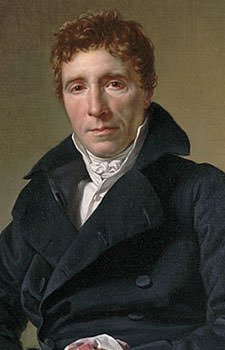
Sieyes was a Roman Catholic abbe who was influenced by the ideologies of the political thinkers of the Age of Enlightenment. France, at the time, was divided into three estates: first was the clergy; second was the nobility; and the third was the rest, the common people comprising 98% of the population. In 1789, just before the French Revolution, Sieyes wrote a pamphlet titled What Is the Third Estate? In it he asserted the third estate wanted genuine representatives in governing the nation. The pamphlet caused a stir in France and played a key role in shaping the revolutionary thought that propelled France towards the French Revolution. Sieyes remained an influential figure during the Revolution and was made Director of France in May 1799. However, he knew about the prevalent corruption in the Directory and overthrew it with the help of popular military leader Napoleon Bonaparte in the Coup of 18 Brumaire. This is considered by most historians as the end of the Revolution. Bonaparte, Sieyes and Roger Ducos were appointed as “Consuls of the French Republic” after the coup.
#2 Honoré Gabriel Riqueti, Count of Mirabeau
| Lifespan: | March 9, 1749 – April 2, 1791 |
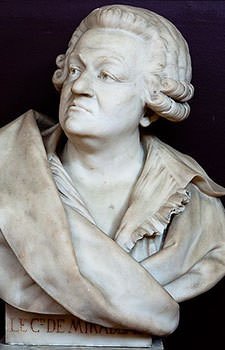
Before the French Revolution, the reputation of Comte de Mirabeau was in ruins due to various scandalous love affairs and gambling debts. However his capacity for work and extensive knowledge made him popular among the crowds during the Revolution. Among other things, he understood that for a government to be strong, it must be in harmony with the wishes of the majority of the people. Founded in 1789 by anti-royalists, the Jacobin Club was the most influential political club during the French Revolution. An excellent orator, Mirabeau became a leading figure in the Jacobin Club in the early stages of the Revolution and he was even elected its president in December 1790. The following year his health began to fail and he died in Paris on April 2. At the time of his death, he was hailed as one of the fathers of the Revolution. However, it was later revealed that Mirabeau had been in secret service of King Louis XVI receiving 6,000 livres a month. This shattered his reputation in France. His corpse was removed from the Pantheon, placed in a lead coffin and interred in a communal burial ground.
#3 Gilbert du Motier, Marquis de Lafayette
| Lifespan: | September 6, 1757 – May 20, 1834 |
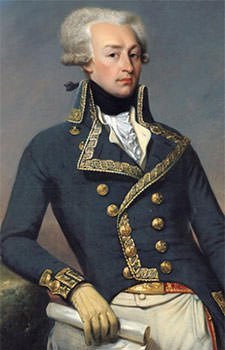
After fighting for the United States in the American Revolution, Marquis de Lafayette got involved in the French Revolution. In consultation with Thomas Jefferson and along with Abbe Sieyes, Lafayette wrote the Declaration of the Rights of Man and of the Citizen. The Declaration represented the core values of the French Revolution. It had a major impact on the development of freedom and democracy in Europe and worldwide. As leader of the National Guard, Lafayette attempted to maintain order and steer a middle ground, even as the radicals gained increasing influence. Lafayette was accused of being a traitor when the king and his family almost escaped in 1791. The following year he had to flee from France as the radicals ordered his arrest. He was captured by Austrian troops and spent more than five years in prison. Lafayette returned to France after Napoleon Bonaparte secured his release in 1797.
#4 Jean-Paul Marat
| Lifespan: | May 24, 1743 – July 13, 1793 |

Jean-Paul Marat was perhaps the most influential journalist during the French Revolution. His journalism was known for its fierce tone; and uncompromising stance towards the new leaders and institutions of the revolution. Among other thing, he advocated for basic human rights for the poorest people in France. He reached the public through his periodical L’Ami du peuple (The Friend of the People), which is regarded as “the most celebrated radical paper of the Revolution”. The provocative journalism of Marat is credited with playing a significant role in several radical events of the Revolution including the Women’s March on Versailles, the suspension of the monarchy and the September Massacres. Marat also played a substantial role in the purge of the moderate Girondins. A woman named Charlotte Corday, a Girondins’ sympathizer, assassinated Marat while he was taking a medicinal bath. She was guillotined four days later. Marat was given a grand funeral and was hailed as a Revolutionary martyr.
#5 Jacques Pierre Brissot
| Lifespan: | January 15 1754 – October 31, 1793 |
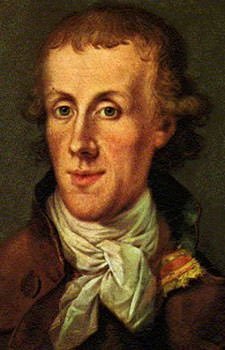
The National Convention was the first government of the French Revolution. The first phase of the convention, which lasted from September 1792 to May 1793, was dominated by the struggle between two groups, the Montagnards and the Girondins. The Montagnards were the most radical group which focused on the needs of the urban poor while the Girondins were more moderate and attracted a following of businessmen, merchants, industrialists and financiers. Jacques Pierre Brissot was the most prominent leader of the Girondins to the extent that their opponents often called them Brissotins. He was an influential member of the diplomatic committee and his report led to France declaring war on Great Britain and the Dutch. However, as the Montagnards gained power, Brissot was accused of being friends with a traitor and of bringing war upon France. He was ultimately guillotined on October 31, 1793.
#6 Maximilien Robespierre
| Lifespan: | May 6, 1758 – July 28, 1794 |
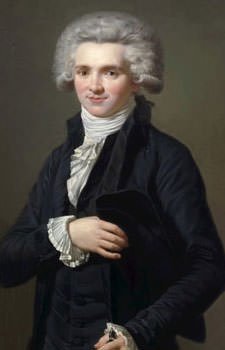
Robespierre was one of the best known and most influential leaders of the French Revolution. Among other things, he was an outspoken advocate for the poor, for universal male suffrage, for price controls of basic commodities and for abolition of slavery in the French colonies. His steadfast adherence to the views he believed in earned him the nickname l’Incorruptible (The Incorruptible). Following the defeat of the Girondins in June 1793, the Montagnards formed the Committee of Public Safety, which became the de facto executive government in France during the phase of the Revolution known as the Reign of Terror. Maximilien Robespierre was the leading member of the Committee. In the name of ridding the nation of the enemies of the Revolution, an estimated 40,000 people were executed during the Reign of Terror. However, by mid-1794, Robespierre become a target of conspiracies as the members feared that they could be guillotined next. He was arrested and guillotined on 28th July 1794 bringing an end to the Reign of Terror.
#7 Louis Antoine de Saint-Just
| Lifespan: | August 25, 1767 – July 28, 1794 |
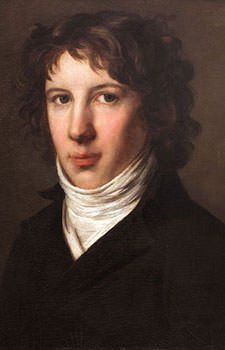
Louis Antoine de Saint-Just was the youngest of the deputies elected to the National Convention in 1792. He came to prominence when he gave a fiery speech at the Convention condemning King Louis XVI. He demanded that “Louis Capet” should be judged not as a king or even a citizen, but as a traitor, an enemy who deserves death. After spearheading the movement that led to the execution of the king, Saint-Just drafted the radical French Constitution of 1793. During the Reign of Terror, he became a close ally of Robespierre. Saint-Just was dubbed the “Angel of Death” as he became the face of Terror with his organization of the arrests and prosecutions of many well known figures of the Revolution. He was also sent as a figure of authority to the French Army during its rocky start in the French Revolutionary Wars. He is said to have helped in the revival of the army through his implementation of strict discipline. Saint-Just was executed along with Robespierre on 28th July 1794.
#8 Georges Danton
| Lifespan: | October 26, 1759 – April 5, 1794 |
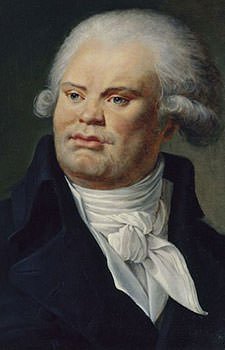
Georges Danton was a leader of the Cordeliers Club, one of the popular clubs of the French Revolution. Under his leadership, the club became a significant political force. He also made frequent speeches at the Jacobin Club. On 10th August 1792, an angry crowd marched on the Tuileries Palace where the king resided and killed the Swiss Guards who were assigned for his protection. The king, along with his family, had to flee to the Assembly. This event played a key role in overthrow of King Louis XVI and ultimately his execution. Danton has been credited by many historians as “the chief force in the overthrow of the French monarchy and the establishment of the First French Republic”. His role in the August 10 event is not clear but he did take credit for it. Georges Danton then became the first president of the Committee of Public Safety. However, as the Reign of Terror began, he became more moderate and opposed it. This led to his death at the guillotine on April 5, 1794.
#9 Lazare Carnot
| Lifespan: | May 13, 1753 – August 2, 1823 |
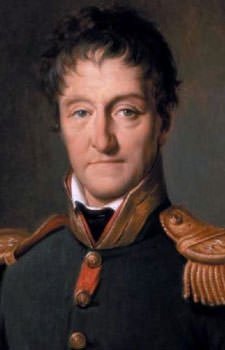
After the execution of King Louis XVI in January 1793, France’s enemies wanted to destroy the Republic and reinstate a monarchy. Several European powers thus formed a coalition to defeat France and it seemed that the fall of the Republic was imminent. At this time Lazare Carnot, a mathematician and physicist, was promoted to the Committee of Public Safety. Displaying an exceptional talent for organization and for enforcing discipline, Carnot set about rearranging the disordered French Revolutionary Army. He also introduced compulsory enlistment to raise France’s army from 645,000 troops in mid-1793 to 1,500,000 in September 1794. The French Revolutionary Army successfully expelled foreign forces from French soil and then overran many neighboring countries. Lazare Carnot is thus known as the Organizer of Victory in the French Revolutionary Wars. He also appointed Napoleon Bonaparte as general in chief of the Army of Italy when no one else backed him. In 1800, after the Revolution, Napoleon appointed Carnot as Minister of War.
#10 Napoleon Bonaparte
| Lifespan: | August 15 1769 – May 5, 1821 |
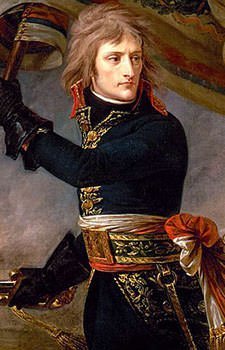
The French Revolution was widespread and violent by 1793. Some citizens had began supporting the Royalist faction and had taken up arms against the Revolutionary forces. France was at civil war and it was also engaged with other countries, who wanted to restore the monarchy. At such a time, Napoleon Bonaparte rose to prominence as a general of the Revolutionary government against the Royalist forces. After crushing an internal revolt by the royalist forces, he was given command of the Army of Italy. He then led several successful campaigns against the Coalition of European countries, virtually winning every battle. He became a national hero in France due to his exceptional military talent. He took advantage of this to organize the Coup of 18th Brumaire to overthrow the Directory and became First Consul of the Republic. This is considered the end of the French Revolution. Napoleon went on to become Emperor of the French in 1804 and he made France the leading European power for a while.
French Revolution was a pivotal event in world history which began with the Storming of the Bastille in 1789 and ended in 1799 with the ascent of Napoleon Bonaparte. The writings of Emmanuel Joseph Sieyes played an important part in propelling France towards the Revolution. Count of Mirabeau and Marquis de Lafayette were among the best known leaders during the early stage of the Revolution. As the Revolution gathered steam, the political class of France was divided into the moderate Girondins and the more radical Montagnards. Jacques Pierre Brissot and Maximilien Robespierre were the most important leaders of the Girondins and the Montagnards respectively. Externally, Lazare Carnot and Napoleon Bonaparte were the leading figures who helped France win the Revolutionary Wars. Know more about the French Revolution through its 10 most important leaders.
#1 Emmanuel Joseph Sieyès
| Lifespan: | May 3, 1748 – June 20, 1836 |

Sieyes was a Roman Catholic abbe who was influenced by the ideologies of the political thinkers of the Age of Enlightenment. France, at the time, was divided into three estates: first was the clergy; second was the nobility; and the third was the rest, the common people comprising 98% of the population. In 1789, just before the French Revolution, Sieyes wrote a pamphlet titled What Is the Third Estate? In it he asserted the third estate wanted genuine representatives in governing the nation. The pamphlet caused a stir in France and played a key role in shaping the revolutionary thought that propelled France towards the French Revolution. Sieyes remained an influential figure during the Revolution and was made Director of France in May 1799. However, he knew about the prevalent corruption in the Directory and overthrew it with the help of popular military leader Napoleon Bonaparte in the Coup of 18 Brumaire. This is considered by most historians as the end of the Revolution. Bonaparte, Sieyes and Roger Ducos were appointed as “Consuls of the French Republic” after the coup.
#2 Honoré Gabriel Riqueti, Count of Mirabeau
| Lifespan: | March 9, 1749 – April 2, 1791 |

Before the French Revolution, the reputation of Comte de Mirabeau was in ruins due to various scandalous love affairs and gambling debts. However his capacity for work and extensive knowledge made him popular among the crowds during the Revolution. Among other things, he understood that for a government to be strong, it must be in harmony with the wishes of the majority of the people. Founded in 1789 by anti-royalists, the Jacobin Club was the most influential political club during the French Revolution. An excellent orator, Mirabeau became a leading figure in the Jacobin Club in the early stages of the Revolution and he was even elected its president in December 1790. The following year his health began to fail and he died in Paris on April 2. At the time of his death, he was hailed as one of the fathers of the Revolution. However, it was later revealed that Mirabeau had been in secret service of King Louis XVI receiving 6,000 livres a month. This shattered his reputation in France. His corpse was removed from the Pantheon, placed in a lead coffin and interred in a communal burial ground.
#3 Gilbert du Motier, Marquis de Lafayette
| Lifespan: | September 6, 1757 – May 20, 1834 |

After fighting for the United States in the American Revolution, Marquis de Lafayette got involved in the French Revolution. In consultation with Thomas Jefferson and along with Abbe Sieyes, Lafayette wrote the Declaration of the Rights of Man and of the Citizen. The Declaration represented the core values of the French Revolution. It had a major impact on the development of freedom and democracy in Europe and worldwide. As leader of the National Guard, Lafayette attempted to maintain order and steer a middle ground, even as the radicals gained increasing influence. Lafayette was accused of being a traitor when the king and his family almost escaped in 1791. The following year he had to flee from France as the radicals ordered his arrest. He was captured by Austrian troops and spent more than five years in prison. Lafayette returned to France after Napoleon Bonaparte secured his release in 1797.
#4 Jean-Paul Marat
| Lifespan: | May 24, 1743 – July 13, 1793 |

Jean-Paul Marat was perhaps the most influential journalist during the French Revolution. His journalism was known for its fierce tone; and uncompromising stance towards the new leaders and institutions of the revolution. Among other thing, he advocated for basic human rights for the poorest people in France. He reached the public through his periodical L’Ami du peuple (The Friend of the People), which is regarded as “the most celebrated radical paper of the Revolution”. The provocative journalism of Marat is credited with playing a significant role in several radical events of the Revolution including the Women’s March on Versailles, the suspension of the monarchy and the September Massacres. Marat also played a substantial role in the purge of the moderate Girondins. A woman named Charlotte Corday, a Girondins’ sympathizer, assassinated Marat while he was taking a medicinal bath. She was guillotined four days later. Marat was given a grand funeral and was hailed as a Revolutionary martyr.
#5 Jacques Pierre Brissot
| Lifespan: | January 15 1754 – October 31, 1793 |

The National Convention was the first government of the French Revolution. The first phase of the convention, which lasted from September 1792 to May 1793, was dominated by the struggle between two groups, the Montagnards and the Girondins. The Montagnards were the most radical group which focused on the needs of the urban poor while the Girondins were more moderate and attracted a following of businessmen, merchants, industrialists and financiers. Jacques Pierre Brissot was the most prominent leader of the Girondins to the extent that their opponents often called them Brissotins. He was an influential member of the diplomatic committee and his report led to France declaring war on Great Britain and the Dutch. However, as the Montagnards gained power, Brissot was accused of being friends with a traitor and of bringing war upon France. He was ultimately guillotined on October 31, 1793.
#6 Maximilien Robespierre
| Lifespan: | May 6, 1758 – July 28, 1794 |

Robespierre was one of the best known and most influential leaders of the French Revolution. Among other things, he was an outspoken advocate for the poor, for universal male suffrage, for price controls of basic commodities and for abolition of slavery in the French colonies. His steadfast adherence to the views he believed in earned him the nickname l’Incorruptible (The Incorruptible). Following the defeat of the Girondins in June 1793, the Montagnards formed the Committee of Public Safety, which became the de facto executive government in France during the phase of the Revolution known as the Reign of Terror. Maximilien Robespierre was the leading member of the Committee. In the name of ridding the nation of the enemies of the Revolution, an estimated 40,000 people were executed during the Reign of Terror. However, by mid-1794, Robespierre become a target of conspiracies as the members feared that they could be guillotined next. He was arrested and guillotined on 28th July 1794 bringing an end to the Reign of Terror.
#7 Louis Antoine de Saint-Just
| Lifespan: | August 25, 1767 – July 28, 1794 |

Louis Antoine de Saint-Just was the youngest of the deputies elected to the National Convention in 1792. He came to prominence when he gave a fiery speech at the Convention condemning King Louis XVI. He demanded that “Louis Capet” should be judged not as a king or even a citizen, but as a traitor, an enemy who deserves death. After spearheading the movement that led to the execution of the king, Saint-Just drafted the radical French Constitution of 1793. During the Reign of Terror, he became a close ally of Robespierre. Saint-Just was dubbed the “Angel of Death” as he became the face of Terror with his organization of the arrests and prosecutions of many well known figures of the Revolution. He was also sent as a figure of authority to the French Army during its rocky start in the French Revolutionary Wars. He is said to have helped in the revival of the army through his implementation of strict discipline. Saint-Just was executed along with Robespierre on 28th July 1794.
#8 Georges Danton
| Lifespan: | October 26, 1759 – April 5, 1794 |

Georges Danton was a leader of the Cordeliers Club, one of the popular clubs of the French Revolution. Under his leadership, the club became a significant political force. He also made frequent speeches at the Jacobin Club. On 10th August 1792, an angry crowd marched on the Tuileries Palace where the king resided and killed the Swiss Guards who were assigned for his protection. The king, along with his family, had to flee to the Assembly. This event played a key role in overthrow of King Louis XVI and ultimately his execution. Danton has been credited by many historians as “the chief force in the overthrow of the French monarchy and the establishment of the First French Republic”. His role in the August 10 event is not clear but he did take credit for it. Georges Danton then became the first president of the Committee of Public Safety. However, as the Reign of Terror began, he became more moderate and opposed it. This led to his death at the guillotine on April 5, 1794.
#9 Lazare Carnot
| Lifespan: | May 13, 1753 – August 2, 1823 |

After the execution of King Louis XVI in January 1793, France’s enemies wanted to destroy the Republic and reinstate a monarchy. Several European powers thus formed a coalition to defeat France and it seemed that the fall of the Republic was imminent. At this time Lazare Carnot, a mathematician and physicist, was promoted to the Committee of Public Safety. Displaying an exceptional talent for organization and for enforcing discipline, Carnot set about rearranging the disordered French Revolutionary Army. He also introduced compulsory enlistment to raise France’s army from 645,000 troops in mid-1793 to 1,500,000 in September 1794. The French Revolutionary Army successfully expelled foreign forces from French soil and then overran many neighboring countries. Lazare Carnot is thus known as the Organizer of Victory in the French Revolutionary Wars. He also appointed Napoleon Bonaparte as general in chief of the Army of Italy when no one else backed him. In 1800, after the Revolution, Napoleon appointed Carnot as Minister of War.
#10 Napoleon Bonaparte
| Lifespan: | August 15 1769 – May 5, 1821 |

The French Revolution was widespread and violent by 1793. Some citizens had began supporting the Royalist faction and had taken up arms against the Revolutionary forces. France was at civil war and it was also engaged with other countries, who wanted to restore the monarchy. At such a time, Napoleon Bonaparte rose to prominence as a general of the Revolutionary government against the Royalist forces. After crushing an internal revolt by the royalist forces, he was given command of the Army of Italy. He then led several successful campaigns against the Coalition of European countries, virtually winning every battle. He became a national hero in France due to his exceptional military talent. He took advantage of this to organize the Coup of 18th Brumaire to overthrow the Directory and became First Consul of the Republic. This is considered the end of the French Revolution. Napoleon went on to become Emperor of the French in 1804 and he made France the leading European power for a while.

